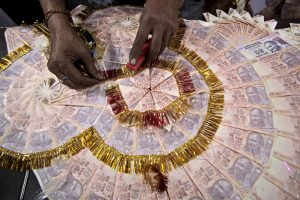Thirty years ago, India embarked on a massive program to reform its economy amid a grave balance-of-payments crisis that led New Delhi to secure loans from outside against the country’s gold reserves. The reform program soon became wide-ranging and opened up the Indian economy to the world, setting India on course to become the world’s sixth largest economy in nominal terms three decades later. The reform program – controversial at the time – in turn secured New Delhi geopolitical heft as key industrialized nations found a growing and extremely large middle-class market for their goods and an ideologically-congruent counterweight to communist China. India’s exports soon included advanced information technology (IT) services, earning the country the sobriquet of an IT powerhouse. The economic and social impacts of the reform program were far-reaching: It lifted millions of Indians out of poverty; its middle class became outward looking; and India looked poised to become part of the “political West,” some analysts argued.
Three decades later, between the COVID-19 pandemic as well as poor policy choices, India’s economy once again finds itself in troubled waters with its growth trajectory uncertain and key sectors – such as manufacturing – in disarray. More troubling, Prime Minister Narendra Modi’s commitment to the overall tone of the reforms program initiated 30 years ago remains uncertain and prospects of deeper reforms of the factor markets look dim and politically expensive.
Economist Dr. Ashok Desai was a key figure in the early days of the reform program, as New Delhi took dramatic measures to prevent the Indian economy from falling off a cliff. As chief consultant to the Indian Finance Ministry between December 1991 and September 1993 – a position equivalent to that of the chief economic adviser – he worked closely with then-Finance Minister Manmohan Singh (widely seen as the architect of India’s economic liberalization, and later prime minister for a decade) to push through key measures to open the Indian economy. Desai, who also served in Prime Minister Atal Bihari Vajpayee’s council of economic advisers, spoke frankly with The Diplomat over email about India’s economic liberalization: the choices the country made, the ones it didn’t, and how the past may no longer hold the key to the future.
For readers unfamiliar with India’s economic history, could you please recap the circumstances that led New Delhi to embark on the path of economic liberalization 30 years ago? Can you tell us a bit about India’s traditional approach to its economy before 1991?
India was Britain’s biggest colony and was drawn into World War II by its masters in 1939; its government introduced severe controls on balance of payments and industrial production. When India became independent in 1947, it inherited the controls. Its new rulers from the Congress had spent years in agitations and jails and had no experience of running government. They were led by Jawaharlal Nehru, who had picked up a penchant for socialism during his youth in England. He retained the controls and turned them into an instrument to discriminate against capitalists – home-grown as well as foreign – and promoted state-led industrialization.
These policies led to one balance of payments crisis after another. Each crisis led to more restrictive import policies and raised domestic prices even further and made exports uncompetitive. The last came in 1989. Yashwant Sinha, then finance minister serving the Janata Dal party, took one loan after another. Finally, India’s external position became so dire that international institutions refused any further loans unless the rupee was devalued, and controls dismantled. He did not; whether he was against it or was prevented by the Congress party on whose support the government survived, is disputed. The Congress formed the next government under P.V. Narasimha Rao in 1991 and accepted International Monetary Fund (IMF)-World Bank conditions, which were the foundation of liberalization.

































